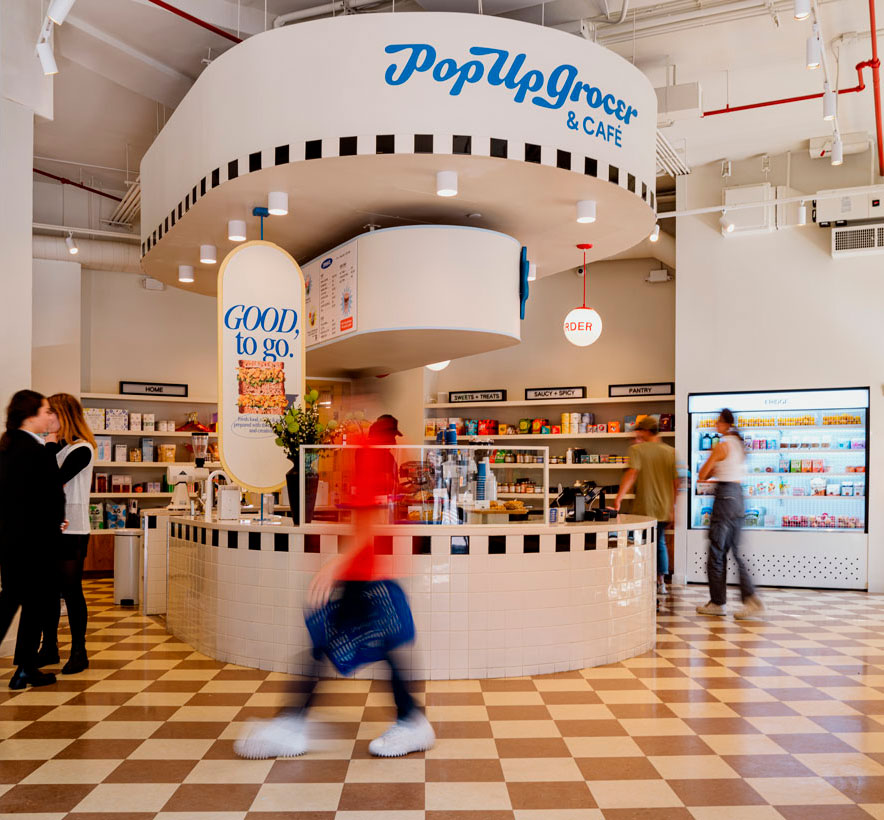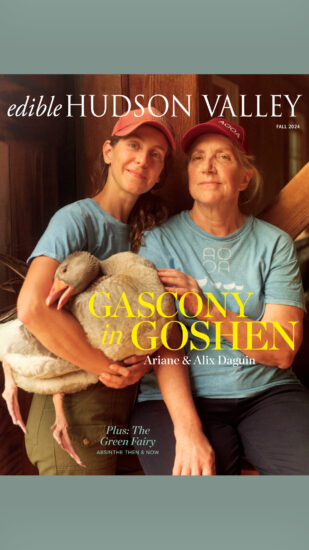How TikTok is Stacking Your Grocery’s Shelves
Tinned fish. Jewel-toned aperitifs. Sparkling drinks, both bottled and canned. No, this isn’t a specialty grocery store—it’s your social media feed. Beyond cute dogs and influencers, Instagram and TikTok are now peppered with bright, colorful brands begging for your attention. And it’s not just a trend. Many emerging consumer packaged goods (CPG) are trading IRL grocery store rollouts for online launches. For emerging brands, the online marketplace has a lower barrier of entry compared to the hurdles of retail, the biggest of which is cost. “A major retailer requires you to pay to be on the shelf, period,” says Emily Schildt, founder of Pop Up Grocer, a pop-up turned Manhattan brick-and-mortar store. Costs can include mandated marketing spends and in-store sampling fees, plus thousands of dollars for premium shelf placement. Yet despite this, products are still not guaranteed placement.
“You’d be shocked to learn that grocery stores don’t put the inventory out as they’re paid to do,” Schildt says.
Another reason behind this shift? The pandemic. Stay-at-home orders coupled with the closures of public spaces ushered in a new wave of shoppers who lived online. Becca Millstein launched her brand, Fishwife, in 2020 during the height of the pandemic, a time when all eyes were on social.
“Everyone was at home looking for excitement, looking for joy,” she says. “While supply chain challenges certainly existed, those were still outweighed by the benefits of a captive audience.”
Wise brands followed the audience, and feeds began to fill with pandemic necessities, from the comfiest WFH gear to pantry essentials. The introduction of shopping buttons to both TikTok and Instagram made it easy to buy new foods in just a few swipes. But as video content began outperforming static posts, audiences started seeking out a different kind of engagement, especially when it came to food. Moving away from the perfection of slickly styled food porn, influencers started uploading authentic slice-of-life content. Their posts were so effective that sponsors took note.
Food and bev brands started to pull back the curtain to showcase their goods in newer, more fun ways. Founder of Fly By Jing, Jing Gao, is a constant presence on her brand’s social media feed, sharing new uses for chili crisp (ice cream and chili crisp, anyone?) and hosting virtual cooking classes. When tinned fish reached hot girl food status, Fishwife leaned in by sharing rococo fish boards tagged #tinnedfishdatenight—a hashtag with 47 million views on TikTok.
With the rise of #cooktok came a new crop of influencers ready to promote their favorites. A great example of this is Graza. With gorgeous packaging and a commitment to pure olive oil, this squeezy bottle found its way into the hands of home cooks who drizzled it on pizza, barbecue, and even frozen caprese daiquiris. Also a fan of the squeeze was former Bon Appétit recipe developer and cookbook author Molly Baz. With a single Instagram story, she helped to sell out Graza’s inventory during its launch. This was no accident. Kendall Dickieson, head of Graza’s social media, DMd influencers and shipped them out free products with no strings attached. In return, creators shared their recipes pre- and post-launch, helping to build the kind of buzz that can’t be replicated in traditional retail rollouts.
“You can set up an affiliate structure or an ambassador program, whereas in traditional retail that reach is hard to get,” Dickieson says. Now that Graza is in Target and Walmart, Dickieson’s goals are to continue to cultivate relationships
with influencers in those areas. She asks of her team, “How are we investing in our creators to let them speak for us?”
Now that the world has reopened, CPG brands are looking to meet their customers where they are, both in-person and online. However, many brands attest that the groundwork they laid online helped them to identify top sellers and to track customer feedback in real time. “When selling DTC, you’re in the driver’s seat, controlling the narrative and connection with your customers,” says Gao. “You’re able to hear their feedback directly, see the performance immediately, and create a community of loyal followers,” she says.
Millstein agrees that starting with an online presence helps new brands stand out on the shelf. “When you get on those shelves you want people to know your brand. If you don’t have any brand awareness, and you go into a store that has 20,000 SKUs, the risk is very high.”
For up-and-coming brands, building an online presence is now just a part of business. Millstein’s advice to new CPG entrepreneurs is: “Spend a year or two building your business online to get customers nationwide before you actually end up on shelves.”
Pop Up Grocer
TIKTOK BRANDS FIND A BRICK-AND-MORTAR HOME

To ready for the weekly grocery store visit, a New Yorker must: 1) Make a list to avoid buying that third jar of hoisin sauce. 2) Grab the good tote bags stored in the not-so-good tote bag. 3) Bust out the rolling cart to lug it all home. The goal? Get your groceries and get moving. But a visit to Pop Up Grocer in the Greenwich Village might just make you want to linger.
As its name suggests, Pop Up Grocer began in 2019 as a pop-up that gave emerging, independent producers a place to shine. After popping up in New York, Chicago, Denver, and Los Angeles, founder Emily Schildt decided to give her venture a proper home in 2023. And while the grocery no longer pops up, the products inside do.
Stacked with finds straight from your TikTok feed, the goods at Pop Up Grocers range from Beet N Fresno hot sauce by Hot N Saucy to Immorel Beverages mushroom-based functional teas and canned nonalcoholic cocktails. The products also appear on the menu of The Café at Pop Up Grocer, which recently featured a strawberry and cream sandwich made with Oishii strawberries (yes, those gorgeous, viral, Japanese berries). So stop by, grab a cereal latte, and get a taste of your feed IRL.
Grocery Shops and Fresh Bops
MUSIC FOR SHOPPING, COOKING, AND EATING
A Playlist by Michael Tedder
Managing Editor Michael Tedder has written for Stereogum, Esquire, The Ringer, The Village Voice, InsideHook, and Rolling Stone and is the former managing editor of CMJ and Paper. His book Top Eight: How MySpace Changed Music is available now. Say hello at www.michaeltedder.com



